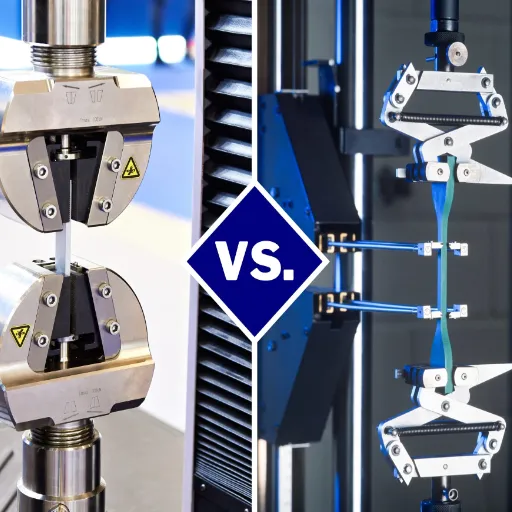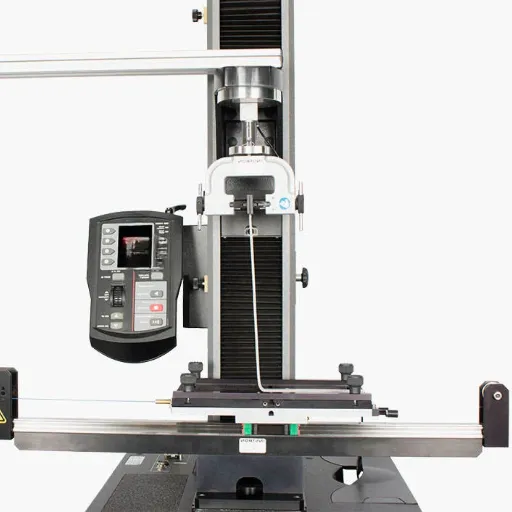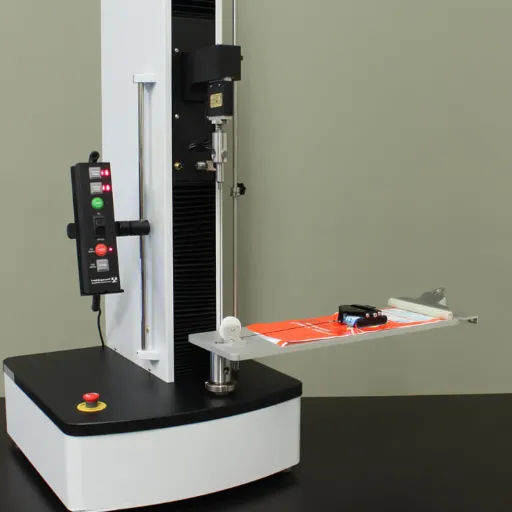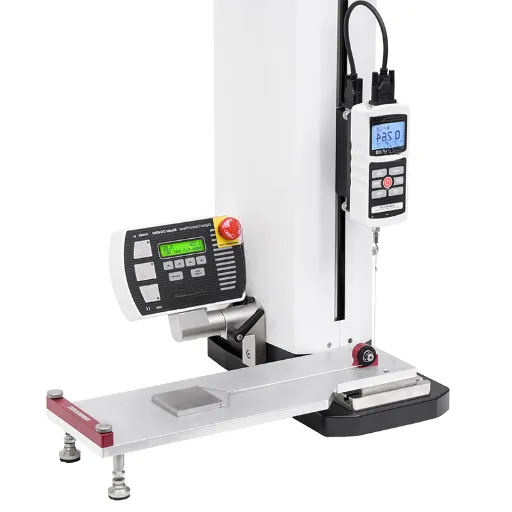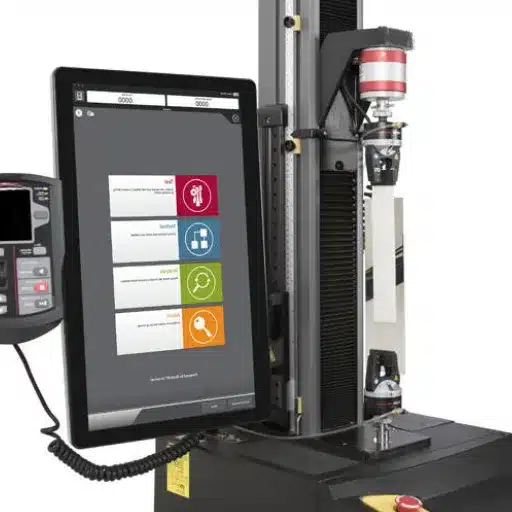Where the measurement of strength and behavior of materials is the standpoint of material science and engineering, tensile and in-compression tests stand as fundamental means. Such tests tell us how forces affect the materials being stretched or compressed, and industries like construction and aerospace need to use this information. But what truly distinguishes tension from compression, and why is a test for each established as critical for the design of strong and good structures? This paper will, consequently, discuss the basics of tensile and compression tests, look at their differences, and show their importance in the practical determination of material properties. If you are a student, engineer, or one simply curious about how materials in this world around you are tested for strength, this guide will present a straightforward and lucid treatise.
Introduction to Material Testing

Definition of Tensile and Compression Tests
The tensile test is a procedure within the field of material science. It evaluates the tensile strength of a material, which is the opposing force a material exerts on stretching. The tests are conducted through stretching the material. Material properties such as tensile strength, elongation, and Young’s modulus are important to undergo the test because they can provide deeper information about the material’s flexibility and durability. In contrast, compression tests measure the behavior of materials under compressive loads. This is the ability to withstand forces that are aimed to push the material and materials that are supposed to bear loads are of special interest. Important results of a compressive test include compressive strength, deformation under load, and elastic limit.
The tests are important in understanding the mechanical properties of a material. This helps in making certain that the materials used are suitable for the intended purpose. From the construction of tall buildings to the fabrication of car parts and even to the creation of household items, the data obtained from the tests on tensile and compression strengths guide the engineers on the best practices that involve safety and efficiency.
Importance of Understanding Material Performance
Effective materials performance analysis is a prerequisite to guaranteeing optimal and safe functionality of materials in their intended applications. Through the study of material reaction to tension, compression, and environmental forces, engineers can establish appropriate and efficient applications for materials. The devices and systems in which the materials are employed will then be at a lower risk of malfunction, which could have catastrophic consequences.
The performance of materials is also essential for system design optimization. Appropriate materials decrease product manufacturing expenses, and as a result, the final product can be of low price and high durability. For instance, materials that are strong but low in weight are presently being implemented in the aerospace and automotive sectors in order to increase fuel economy while maintaining high levels of safety and functionality.
In addition, materials performance analysis enables engineers to tailor sustainable products. With such understanding, engineers may create or modify materials to be eco-friendly, or to endure very harsh environmental conditions, which is important for the new emerging materials challenges. Necessarily, the materials must serve their purpose while posing minimal harm to the environment, and with such understanding, a materials engineer is assured to make a great impact for the future of the society.
Overview of Testing Methods
The tensile test and the compression test are fundamental mechanical tests, indispensable to materials science and engineering, and used to evaluate materials under different stress states. Both tests are crucial in understanding a material’s response to shaping or forming, which in turn reveals its strength, ductility, and overall mechanical performance against specified design criteria.
A tensile test is carried out by subjecting a specimen to an axial traction until it breaks. For instance, it can be used in metals, polymers, and composite materials. The test is capable of determining the tensile strength and yield strength, as well as the elongation, of the specimen. These parameters are important because they show the ability of the specimen to withstand forces pulling it.
In contrast, compression testing seeks to understand the behavior of a material under a direct compressive load. The material is squeezed between two plates in order to determine its resistance to deformation. This type of testing is best suited for concrete, ceramics, and other brittle materials in order to determine the compressive strength and elastic properties of the material. Tensile testing in conjunction with compression testing gives a fuller picture of material behaviour and is therefore important for the proper application and further development of materials.
Tensile Test Explained
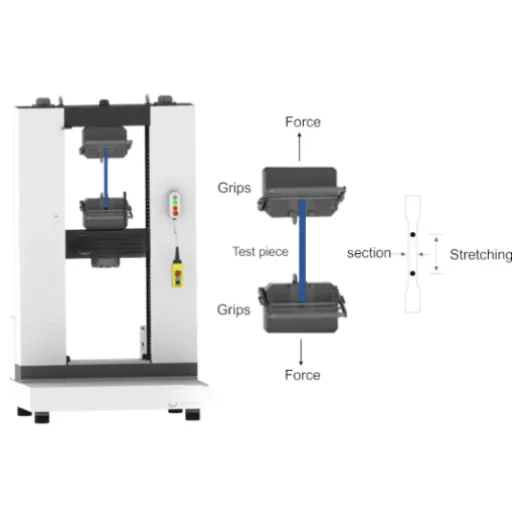
Purpose of the Tensile Test
With the use of a tensile test, one can understand the extent to which a material can resist forces that seek to pull it apart. It provides crucial information concerning the strength, ductility, and elasticity of the material, and it shows how the material behaves under tension. Such a test is vital in understanding the performance and evaluating the suitability of the material for particular applications, especially in products or structures that undergo stretching forces.
A sample is tested by subjecting it to a controlled tension until it breaks. Tensile strength, yield strength, and elongation are the key figures recorded. As opposed to tensile strength, which shows the greatest stress the material can handle before breaking, elongation provides information on how much the material can stretch and its flexibility. Earlier permanent deformation was known to occur at a certain stress level, and yield strength indicates the stress at which it starts.
Information obtained from a tensile test allows engineers and designers to evaluate and decide which materials best fit the needs of a particular task. It determines the ability of a material to withstand given stress conditions, thus enabling the assurance of safety, reliability, and functionality. As materials are tested to confirm their suitability for the application, tensile testing becomes an essential procedure in material testing, which has widespread utility in several industries.
Equipment and Tools Used in Tensile Testing
Key Equipment:
- Universal Testing Machine (UTM): Main equipment for applying controlled force
- Load Cell: Measures applied force accurately
- Extensometer: Measures elongation and strain
- Grips and Fixtures: Securely hold test specimens
Tensile testing necessitates particular machinery tailored to investigate a certain property of materials, in this case, their strength, under uniaxial tension. The main piece of equipment used in tensile testing is a universal testing machine (UTM). A UTM is used to perform a test on a given sample of material by applying a force that is adequately controlled and optimized to the set parameters for the given sample test until the test sample either deforms or breaks. A UTM has a loading frame, and for the measurement of force, a load cell. In addition, it has grips and fixtures that are essential to securely hold the test sample.
In addition to the universal testing machine, other important instruments are needed. One of these is the extensometer, which serves the purpose of measuring the elongation or strain of the material under testing. The extensometer gives invaluable data regarding the stretching of the material, which is necessary for the precise calculation of the tensile modulus, yield strength, or even the breaking point of the material in question. The more advanced versions of the extensometers can be digital, and can give real-time feedback of the data, making the analysis easier.
The test specimens are very important in tensile testing. Test specimens, or samples, are made to precise cutting and shaping dimensions and thus can be in dog-bone or cylindrical shapes. This is very necessary for repeatable tensile testing. ASTM and ISO, among other organizations, provide cutting and shaping standards for tensile specimens and this facilitates uniformity and industry-wide repeatability of tensile testing. These devices and instruments as a whole facilitate tensile testing.
Test Method and Procedure
Testing Procedure Steps:
- Prepare specimens according to ASTM or ISO standards
- Calibrate testing machine and ensure proper alignment
- Secure specimen in grips without slip or additional stress
- Apply uniaxial tensile force at predefined rate
- Monitor and record force, elongation, and failure point
- Analyze data to determine material properties
Standardized testing serves an essential role in ensuring the precision of tensile testing. Specimens must be prepared following the set guidelines such as ASTM or ISO, which would dictate their shape and size. The specimen is fixed in the tensile testing machine’s grips. With the application of a uniaxial tensile force on the specimen, the testing machine begins to pull the specimen apart at a predefined rate up until the sample breaks. Important metrics, such as force applied during testing and elongation at any point, are tracked and documented.
Testing procedures tend to require prior and after calibration of the machine. This calibration ensures that the sample is aligned correctly and the grips hold the sample securely without any slip, additional load, or stress. The machine is programmed to increase the load systematically while capturing the response of the sample in terms of stress, strain, and the period when the ultimate tensile strength is reached. Testing also requires observing safety protocols to shield the operators from the hazards of the sample breaking, especially once tested at high stress levels.
Upon completion of the test, the data is reviewed to identify material properties such as yield strength, tensile elongation, tensile strength, modulus of elasticity, and elongation at break. Understanding how the material behaves at load is critical as the data can be used for material selection and quality control purposes. Tensile testing, like any other test, needs to be conducted in accordance with the relevant test procedure in order to ensure quality results and reproducibility, irrespective of the testing laboratory or the industry.
Compression Test Explained
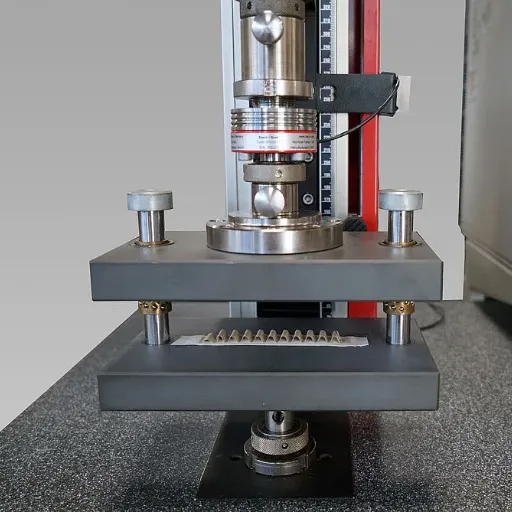
Purpose of the Compression Test
The compression test serves a custom application test is used to verify how a material behaves when a compressive load is applied. The test gives out information on several characteristics such as compressive strength, deformation under load, and stiffness. Such information is very critical because it helps engineers and manufacturers to verify performance of specific materials under compressive loads and ensure that the material fits the application for which it is intended.
The construction, aerospace, and automotive industries utilize compression testing extensively for metals, plastics, and composite materials. This testing allows for the determination of whether these materials can handle weights or pressures that they encounter in service. For instance, compression testing is performed on construction materials to verify that they will support structures safely, and compression testing is also done on automotive materials to verify that these materials will work reliably during usage.
The compression test allows for very important data to be collected that is pertinent to material selection, product design, and quality control. Through the test, the behaviour of materials under compression can be studied, which enables engineers to design functional components and also avoid failures. It is important to follow the compressive testing standards in order to collect valid and repeatable data, to ensure safety and functionality in all applications.
Equipment and Tools Used in Compression Testing
Essential Equipment:
- Compression Testing Machine: Applies compressive forces to specimens
- Load Frames: Support material during testing
- Test Fixture/Platen: Ensures proper alignment and uniform force
- Strain Gauges: Monitor specimen deformation
- Data Recording Systems: Capture and analyze test data
Conducting a compression test on a material to understand the mechanical properties entails conducting a compressive test on the material and requires specific equipment and tools. The test is conducted on a compression testing machine that is the main piece of equipment for this test. The machine tests the material by subjecting it to compressive forces on the test specimen. The machine also has load frames to support the material while being subjected to the forces as well as load cells to measure the forces applied to the material as a result of testing. To complement the testing process, the machines also have auxiliary systems for software or digital recording and analyzing test data.
In compression testing, the test fixture or platen is another critical piece of equipment. These parts are needed to guarantee that the specimen is properly aligned and that the force applied to it is uniform. To further guarantee uniformity of the force, the platen’s surfaces are normally hardened and smooth to minimize the chance of any uneven force that may lead to distortion that would be detrimental to the validity of the test. Hard and polished surfaces indeed help in reducing uneven forces; nevertheless, specific fixtures might be necessary to cater to different shapes and sizes of specimens, thus providing flexibility in the use of specific.
In addition, to properly monitor the deformation of the specimen, devices like strain gauges and extensometers are necessary. These devices enable one to gather critical information on the material properties, including, for instance, the modulus of elasticity and the yield strength of the material in question. By these devices in conjunction with a compression testing machine, a complete testing apparatus is formed that is assured to provide trustworthy data on the performance of materials in compression tests and guarantee that the materials comply with the set industry regulations.
Test Method and Procedure
Compression Testing Steps:
- Cut material to predetermined standard dimensions
- Mount specimen between rigid plates
- Apply compressive force at specified rate
- Maintain proper alignment to prevent unbalanced loading
- Record force, deformation, and failure point
- Verify data against applicable standards
The test method for compression testing begins with cutting the material to the predetermined standard dimensions. The specimen is then mounted on the compression testing machine, where is is gripped between two rigid plates. The testing machine then applies a compressive force, increasing at a specified rate. This rate has to be predetermined and machine calibration should assure this rate is met, ensuring uniform rate and repeatability of the test procedure. Proper alignment of the specimen must be maintained to prevent data distortion from unbalanced loading.
The machine captures critical parameters like applied force, specimen deformation, and failure point. Expected measurements include the peak load the specimen can withstand, the corresponding deformation, and the ultimate compressive strength. This information is critical in performance analysis and validation for future applications.
The post-test process involves verifying data to understand the material’s performance during the test. The evaluation is done to check if the test meets the criteria of the applicable standards. Verification of the test data is done to check if retesting or revision of the test procedure is needed in case of irregularities or discrepancies. This process is important to verify the dependability of the used data in practical applications.
Comparative Analysis: Tensile Test vs. Compression Test
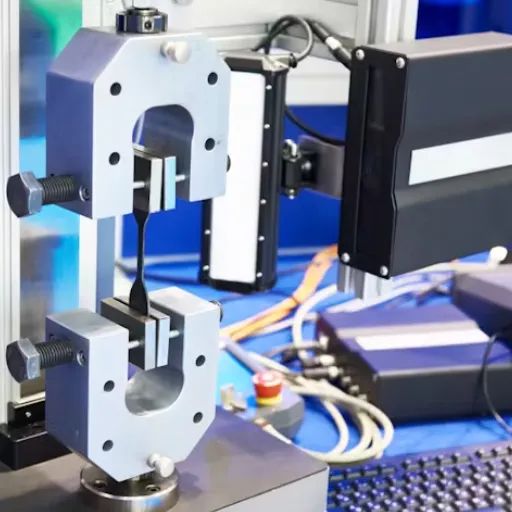
Key Differences Between Tensile and Compression Tests
| Aspect | Tensile Test | Compression Test |
|---|---|---|
| Force Applied | Pulling/Stretching forces | Squeezing/Compressive forces |
| Stress Type | Tensile stress (stretches material) | Compressive stress (shortens material) |
| Material Reaction | Necking before failure | Bulging or buckling |
| Key Measurements | Tensile strength, yield strength, elongation | Compressive strength, modulus of elasticity, buckling resistance |
| Best Suited For | Metals, polymers, composites | Concrete, ceramics, brittle materials |
A material is characterized with respect to its strength within a territory defined by the different forces that can be applied to it, with tensile and compression tests being two such fundamental mechanical tests. The issue of concern is in the tensile and compression tests and the forces involved in them. The strength and ductility of a material can be measured through tensile testing, which involves pulling it apart, whereas compression testing involves compressing the material in order to understand its behaviour to a squeezing force. The nature of the forces involved in the tests is a major issue of concern.
Each test applies a different type of stress. Tension testing induces tensile stress, which stretches and sometimes elongates the material before it breaks. In contrast, compression testing induces compressive stress, which shortens then deforms or breaks the material. These contrary stresses lead to different reactions of materials, for example necking in tension or bulging in compression.
Moreover, test results offer different types of data. Tensile tests measure ultimate tensile strength, yield strength, and elongation at break, among other parameters. Compression testing pays attention to parameters like compressive strength, modulus of elasticity, and the ability of the material to resist buckling or crushing. Material selection for proper applications depends on the proper comprehension of the relations in order to provide the desired reliability and performance under expected load conditions.
Similarities in Testing Approaches
Common Testing Features:
- Both use standardized test machines and sophisticated data collection systems
- Specimens are typically rectangular or cylindrical in shape
- Both evaluate stress-strain relationships
- Follow ASTM and ISO standardized protocols
- Measure essential mechanical properties like strength and modulus of elasticity
Tensile and compression testing chiefly differ in the type of stress being applied to the material. The shape and dimensions of the test piece as well as the rate of load application are specified to suit the chosen stress mode. In both cases, the objective is to measure crucial properties such as the strength, modulus of elasticity, elongation, and in some cases, the ‘reduction of area’. Both tensile and compression tests provide the essential mechanical properties of the material such as strength, deformation behavior, and the point of failure of the material that can be relied on in the performance of the material in a given application.
Likewise, both tests generally make use of standardized test machines and use sophisticated data collection systems to register load and elongation or deformation. The specimens, both for tensile and compression testing, are generally rectangular or cylindrical. The key feature of the analysis is the evaluation of the stress and strain, which is crucial to the understanding of the elastic and the plastic behaviour and other material properties under mechanical forces.
More importantly, a standard testing protocol is available for carrying out either test, which further ensures the comparability and reproducibility of test data. The ASTM and ISO Standards provide a framework specifying the preparation of the test piece, the test method, and the analysis of the data, which helps in the further universality and dependability of the test data. Because of this, these tests are very important in the field of material science and engineering, ensuring the usability of the test data.
How Each Test Complements Material Evaluation
Mechanical tests such as tensile and impact tests are essential to evaluate how materials perform under varying conditions. Tensile testing is important to a material’s strength, ductility, and elasticity because it measures the response to forces stretching it. This is critical to analyze a material’s suitability for high or low strength applications. Whereas, impact testing is important to analyze the behavior of a material in a sudden and strong collision, in cases where sudden high loads are expected to be faced, in the name of safety.
Combining both tests makes it easier for engineers and scientists to understand the materials and their behavior. For example, a tensile test might determine the behavior of a material under slow loading, and the impact test determines how it behaves under rapid loading. With this information, it is far easier and better to analyze materials for particular uses such as construction, and the automotive and aerospace industries. The tests work together in ensuring the material is capable of performing under both dynamic and static conditions.
This kind of testing bolsters the trustworthiness of the evaluation. A material’s tensile and impact test compliance speaks for its adaptability and the steadiness of its performance. The willingness to adopt this methodology improves the chances of eliminating surprises out of the equation. Materials that are tested with this approach can be counted on to perform under the safety, functionality, and durability expectations. In material evaluation, it supports further development and innovation of performance materials that can be adopted in more industries.
Advantages and Limitations of Each Test
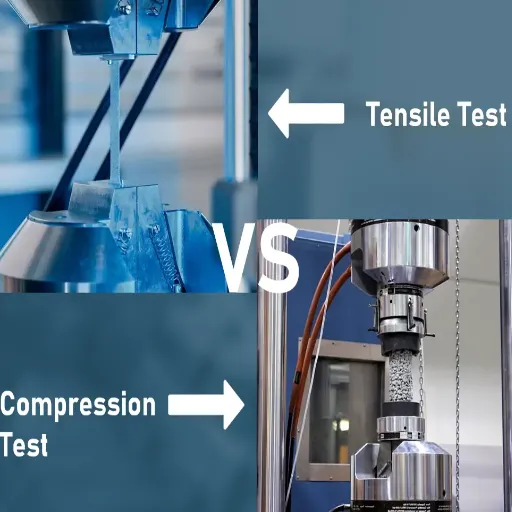
Benefits of Tensile Testing
Key Advantages:
- Comprehensive Material Properties: Reveals strength, elasticity, and ductility
- Safety Assurance: Ensures materials meet performance and safety standards
- Innovation Support: Enables development of stronger, lighter materials
- Quality Control: Identifies weak points for manufacturing improvements
- Design Optimization: Bridges gap between design concepts and reality
Tensile testing reveals essential material properties related to strength, elasticity, and ductility. A controlled tension force is applied on a test specimen until it fails; therefore, it ensures accurate data of how a specimen reacts under an external force. This information is crucial in making judgments as to whether a material is appropriate for a particular application or not, especially in applications there is a high degree of stress or load-bearing.
Another major advantage of tensile testing is that it ensures safety and performance standards. If the ultimate tensile strength and yield strength of a material can be determined, then engineers can design systems and structures that are efficient and resilient. Similarly, this strength testing can point out the weak points in a material, which may lead to alterations in its composition or manufacturing process to improve durability and reliability.
Further, the knowledge generated by tensile testing opens new avenues for innovation and material development. The data serves as a valuable element for research and optimization by which manufacturers can create stronger, lighter, or more flexible materials according to shifts in industry needs. This testing mediates the gap between design concepts and reality, thus catering to the technical and safety aspects of materials.
Challenges Associated with Compression Testing
Major Challenges:
- Alignment Issues: Improper alignment causes uneven loading and incorrect data
- Buckling in Slender Specimens: Materials bend rather than compress uniformly
- Material Heterogeneity: Variations in density or structural defects affect results
- Complex Setup Requirements: Requires advanced equipment and careful preparation
- Time and Resource Intensive: Addressing challenges increases testing costs
Compression testing, while used to validate material strength and deformation behavior, poses several drawbacks which affect the accuracy and exactitude of testing results. The major challenge in test alignment of the specimen is considered. An improperly aligned specimen may experience uneven loading and cause the stress distribution to be incorrect, resulting in wrong recorded data. Precise alignment can only be insured by using high-end equipment and by very complex test set-up.
The other case is the possibility of buckling in slender specimens. When under compression, this phenomenon causes materials to bend or deflect from uniform compression. Such behavior bars exact compressive strength values and calls for a different test method or specimen alteration to prevent it. Addressing this feature costs a little more time and resources.
Lastly, material heterogeneity may also influence the compression test results. By way of example, variations within a material, such as inconsistencies in density or structural defects, may lead to non-representative data. Selection and preparation of specimens ought to be carried out with the utmost care, with the intention of minimizing variability, and thus enabling accurate testing. Obviously, if these hurdles are to be gone beyond, it means compression testing should yield dependable results reproducibly.
Practical Implications for Engineers and Designers
Engineering Applications:
- Material Selection: Choose optimal materials for safety and efficiency
- Load Limit Determination: Set appropriate safety margins
- Regulatory Compliance: Ensure designs meet industry standards
- Innovation Driver: Enable development of new materials and composites
- Cost Optimization: Reduce maintenance and ensure long-term reliability
For engineers and designers, compression testing offers deep insight into material properties that designers may utilize for successful design and structural performance. Understanding the behavior of materials under compressive loads, designers are able to decide upon the best materials in terms of safety, strength, and efficiency for their projects. This translates to materials used in large-scale constructions as well as the smaller designs, thereby reducing the chances of failure when tested in practical scenarios.
Compression tests allow engineers to predict the behavior of materials under real working conditions accurately. Using material data along with time-history analysis based on past behavior and load data, engineers can set load limits, calculate safety margins, and determine the suitability of materials for various environmental scenarios. Such assessments will verify that an engineering design meets regulatory requirements and withstand operational stresses over time, thus ensuring reliability through consistency and lower maintenance costs.
Simply put, anything subjected to compression testing is worth testing. This is a test of innovation because it allows engineers to work with new materials and to improve older ones in the process. Compression testing identifies core deficiencies and strengths of conventional materials such as concrete and metals or composite laminates. Designers and engineers, armed with this knowledge, push the limits of functionality, aiming for sustainability in building structures and products that will withstand the test of time, while being resource-efficient.
Frequently Asked Questions (FAQ)
Q: How are tensile and compression tests different from each other?
A: The difference between tensile test and compression test lies in the type of forces applied on the test specimen. In a tensile test, the material is stressed in axial tension, being pulled apart to determine its tensile strength, yield point, and ductility. Whereas a compression test subjects the material to a compressive force, pushing it together in order to establish its compressive strength and deformation capability under pressure.
Q: How do the tensile and compression tests determine the properties of a material?
A: Tensile and compression tests are used to determine several mechanical properties of materials, such as tensile strength, compressive strength, yield strength, and modulus of elasticity. By experimentally applying forces and measuring the materials’ responses in terms of stress and strain, engineers can ascertain how materials behave under varying forces.
Q: What equipment is used for tensile and compression test?
A: Testing of tensile and compression forces is done chiefly by a universal test machine and occasionally by a compression testing machine. These machines apply loads to the specimen under industrial condition and measure the load corresponding to tensile or compressive forces for analysis of behavior of the material.
Q: What is the significance of the yield point in tensile and compression tests?
A: The yield point in tensile and compression testings is believed to constitute the transition between elastic and plastic deformation. It is useful for engineers to know the limits beyond which a material will act in view of safety and reliability in various applications.
Q: How does the stress-strain relationship differ in tensile tests from compression tests?
A: After the ultimate tensile strength is reached, materials generally undergo a necking phenomenon during tensile testing. Materials undergo other failure modes such as buckling or crushing during compression, and this difference is essential in determining the mechanical properties of a material under varying loading conditions.
Q: What are some instances for the various applications for tensile and compression tests?
A: Tensile and compression tests are a classic set of destructive testing methods used for testing and analysis of materials and components and quality control methods for various industries.
Q: How do tensile tests and compression tests aid in the discovery of material defects?
A: When a load is applied and a material undergoes deformation, tensile and compression testing could expose defects such as cracks or weaknesses within the material. Ensuring the character and employment of the materials is very important for critical applications.
Q: What is elongation in tensile testing?
A: Elongation corresponds to the distance a material stretches before reaching rupture in the tensile test. This is also one of the best measures of ductility used to evaluate the capacity of the material to undergo deformation without failure, which is of key importance to lots of engineering applications.
Q: Can compression testing be conducted on ductile materials?
A: Yes, compression testing can be conducted on ductile metals. While tensile tests deal with the behavior of materials under tension, compression tests determine their behavior under compressive force to provide a complete view of their mechanical properties.
References
- Tensile Test vs. Compression Test: What’s the Difference? – PEM This source explains the applications and distinctions between tensile and compression tests.
- Tensile and Compression Testing – Experior Labs Provides an overview of tensile and compression testing methods and their applications.
- Tensile Strength and Compression Testing – Bossard Discusses the reverse nature of tensile and compression tests and their respective purposes.

